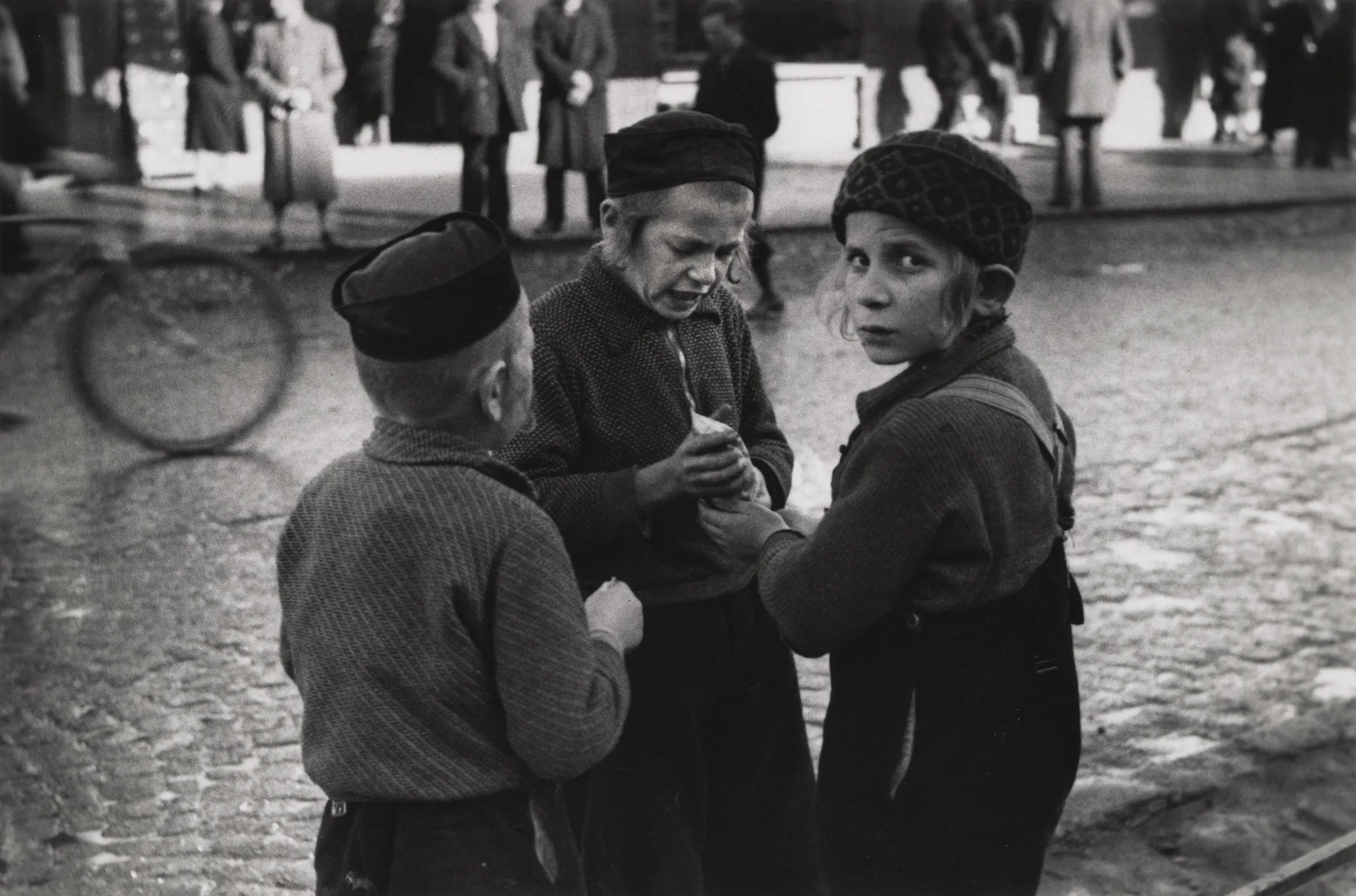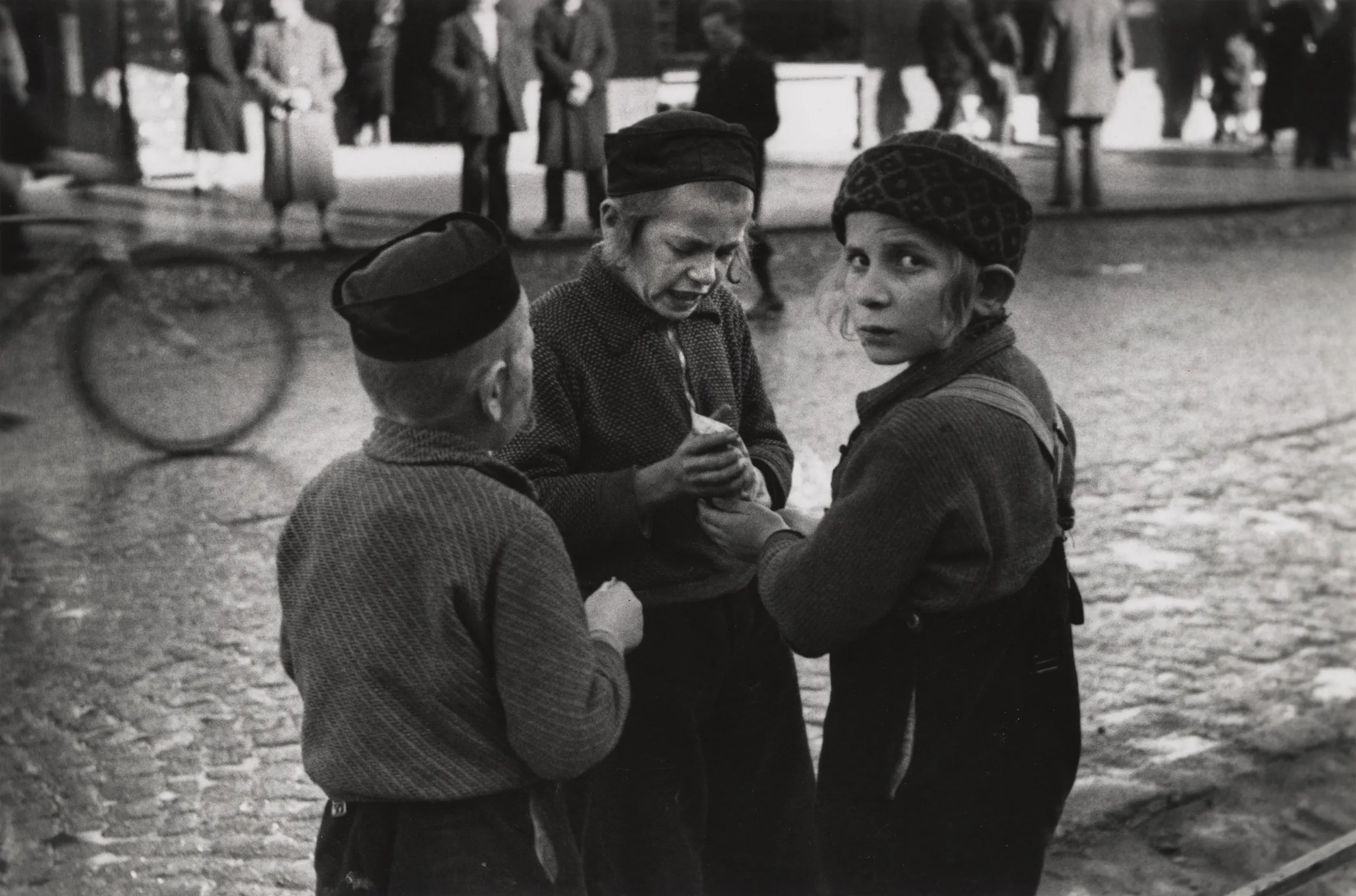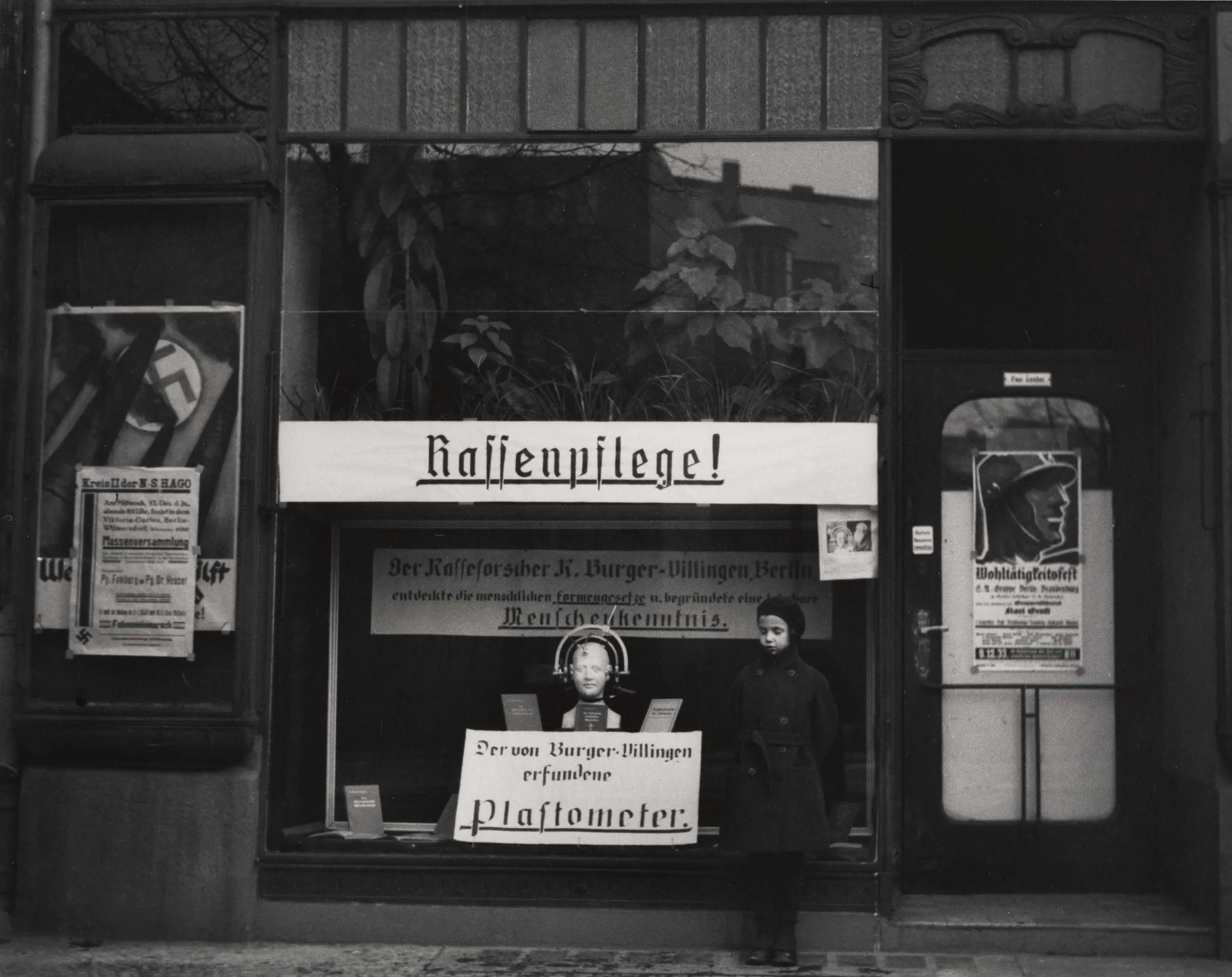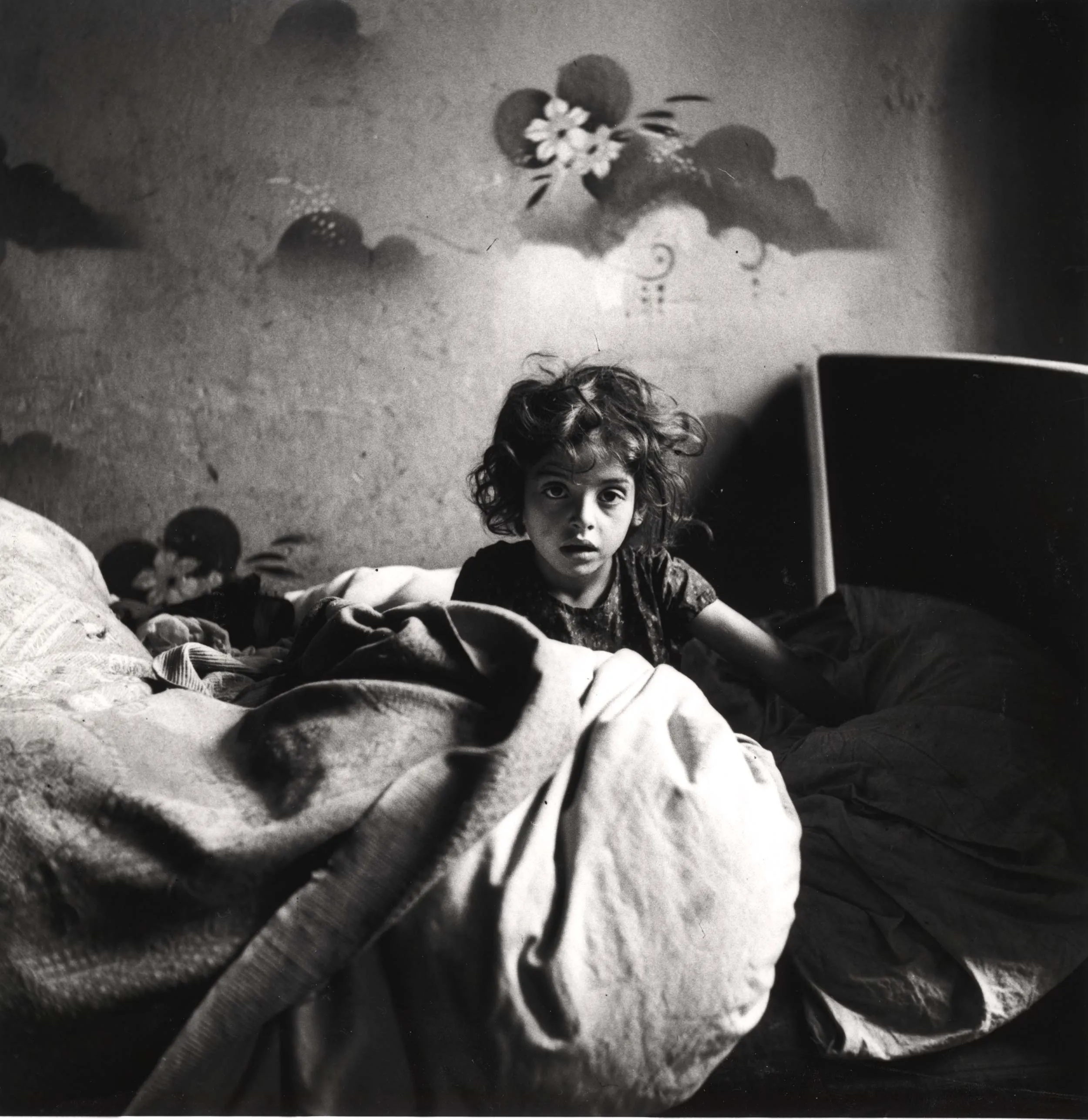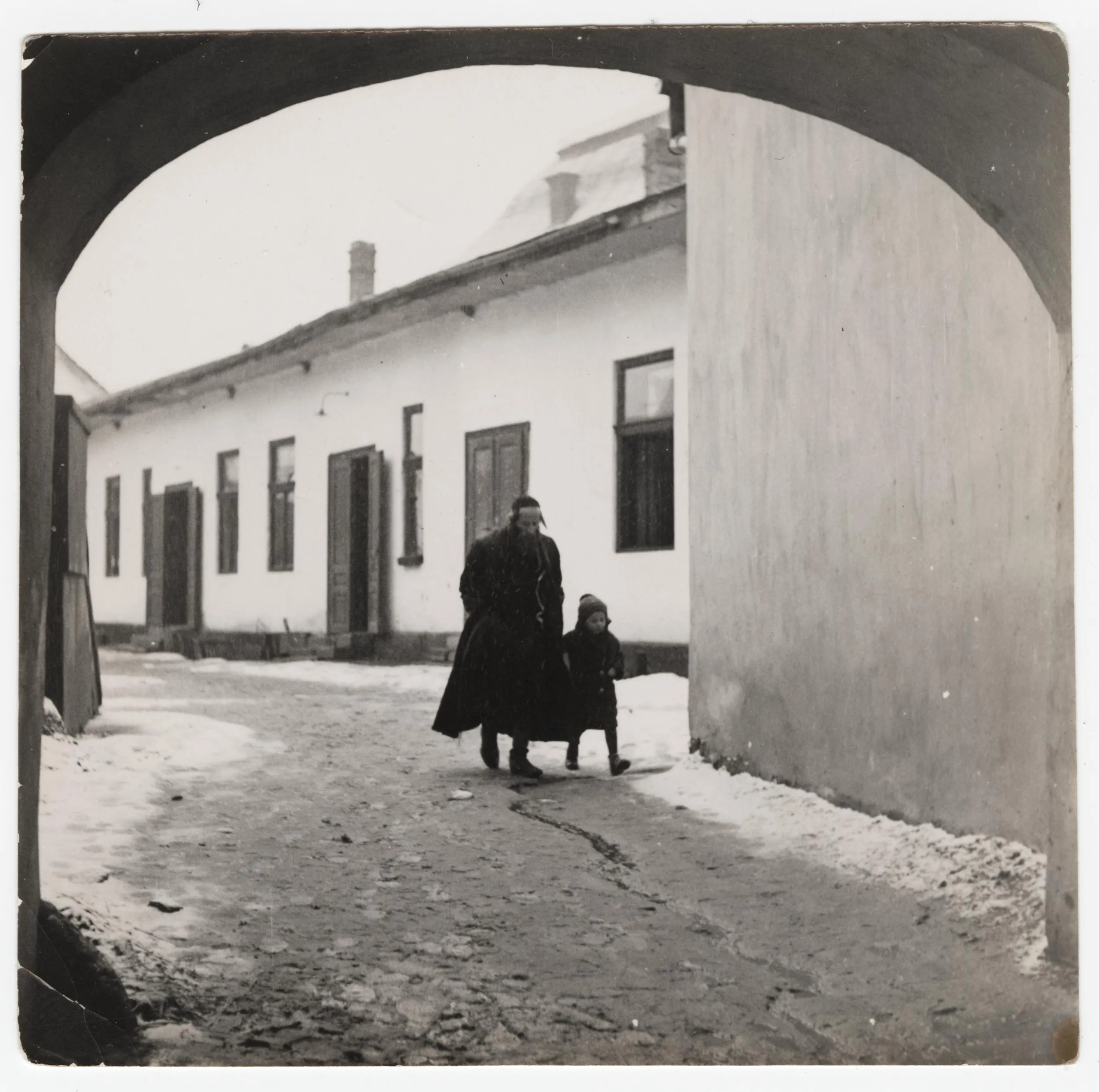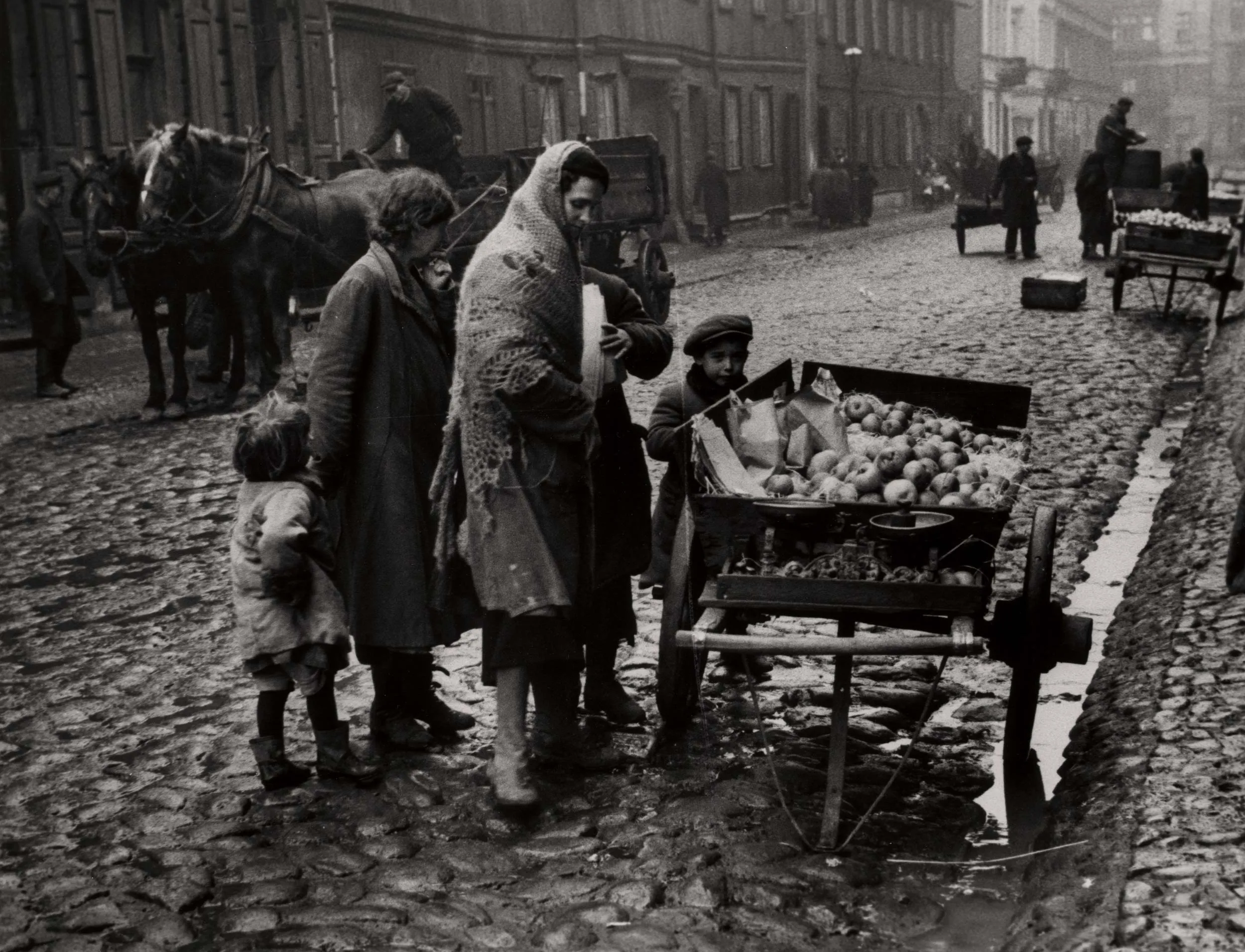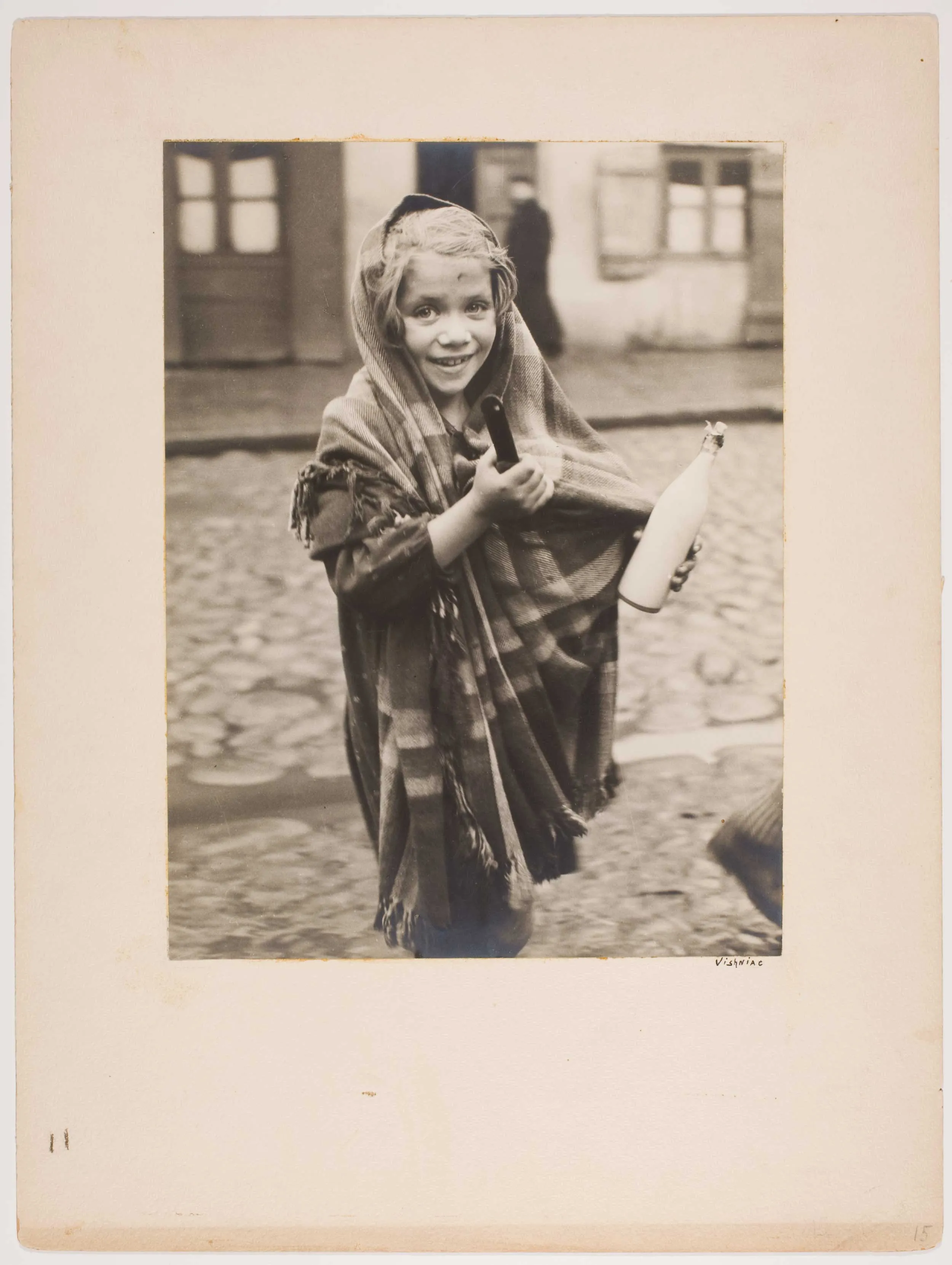Roman Vishniac’s prewar photographs, which Edward Steichen considered among “photography’s finest documents of a time and place,” are the subject of A Vanished World, the International Center of Photography’s Ninth Anniversary Exhibition, on view from November 20, 1983 to January 8, 1984. The exhibition includes approximately 50 of these photographs, taken between 1933 and 1938, many classics, many never before shown or previously published.
Living in Berlin in the 1920s and 30s after his family was forced to flee Russia, Vishniac covered 5,000 miles, across Poland, the Ukraine, Czechoslovakia, Romania, Hungary, Latvia, and Lithuania, documenting Jewish life in cities, villages, and shtetls. Here are the faces of the vanished Jews of Cracow and Warsaw, of Mukachevo, Carpathian Ruthenia, Lublin, Slonim, and Lodz. “He loves them all,” writes Elie Wiesel in the foreword to the publication A Vanished World that accompanies the exhibition, “the rabbis and their pupils, the peddlers and their customers, the beggars and the cantors, the sad old men and the smiling young ones. He loves them because the world they live in did not, and because death has already marked them for its own—death and oblivion as well.”
Cornell Capa, Executive Director of the International Center of Photography has said, “Roman Vishniac has been a passionate and compassionate observer of life for most of his 86 years. His photographs of Jewish communities of Eastern Europe, made on the eve of World War II, constitute the last pictorial record of a unique world that vanished soon after. As a man, a humanist, and a photographer, Roman Vishniac wondrously fulfills Lewis Hine’s definition of what we mean by a concerned photographer—he ‘wanted to show things that had to be appreciated…and things that had to be corrected.’ Roman Vishniac respects life and humanity.”
Past Tour Venue
McMaster University Art Gallery | Hamilton, Ontario
January 17–March 1, 2008


